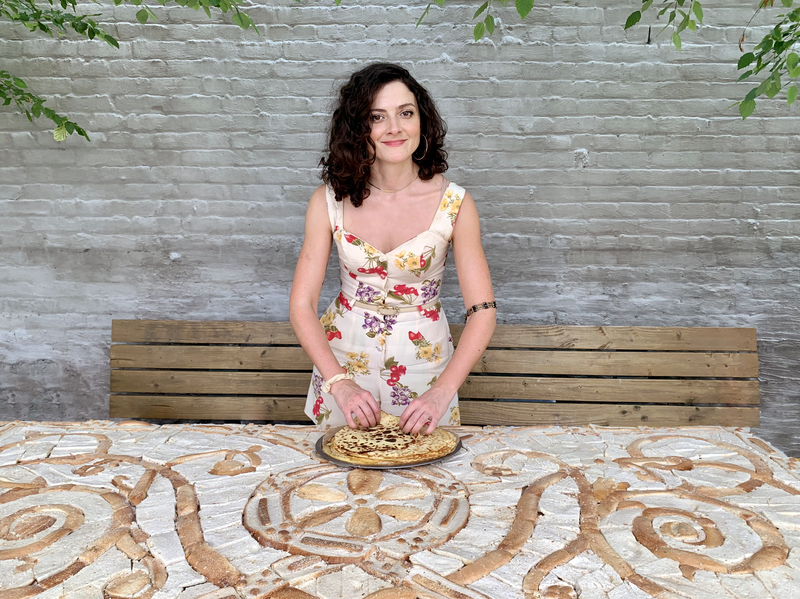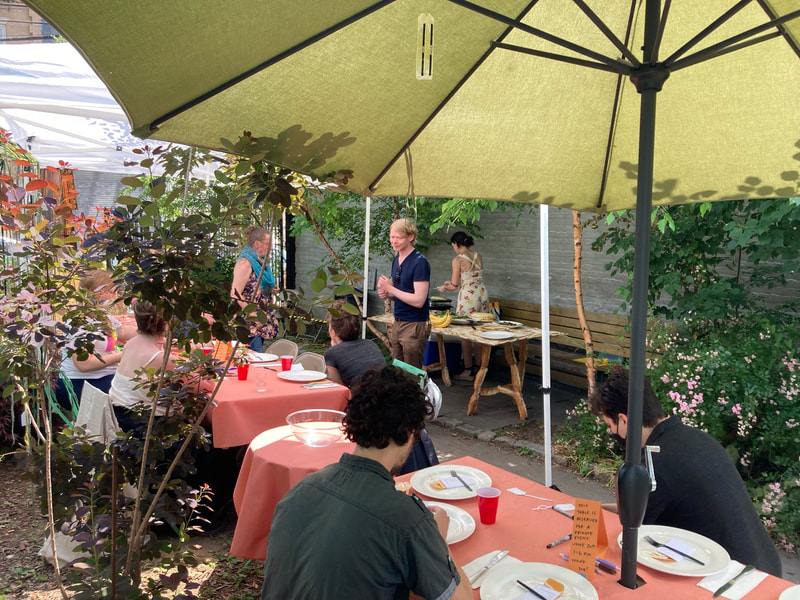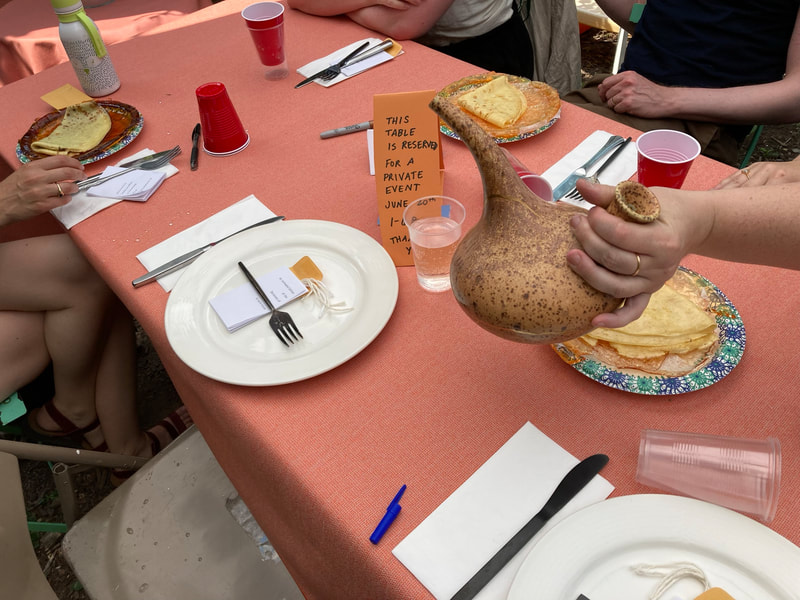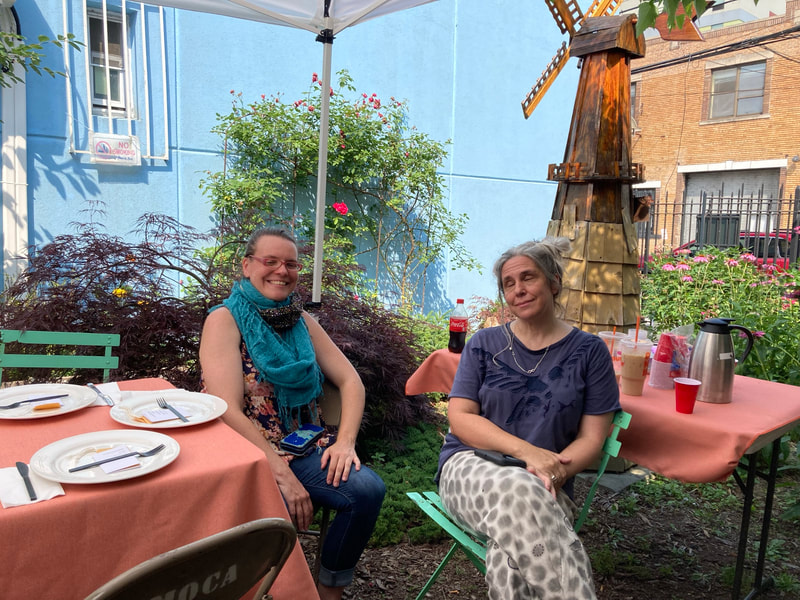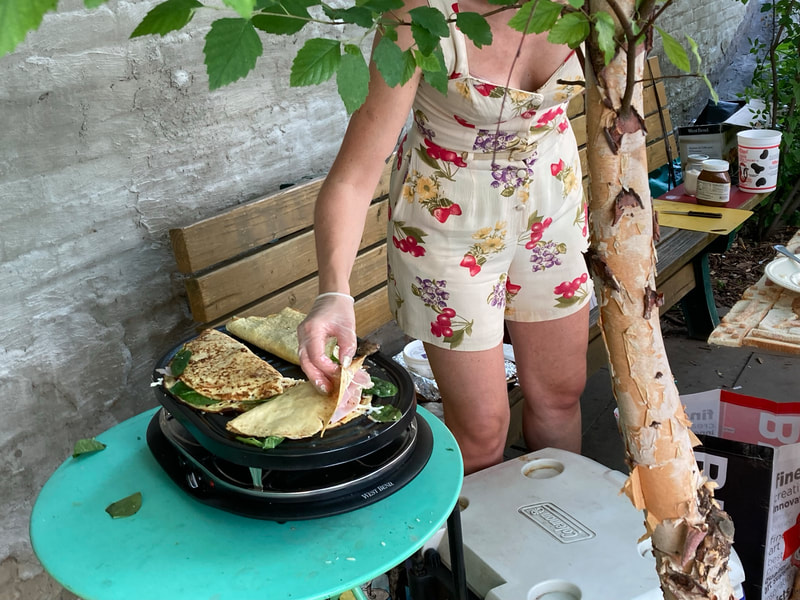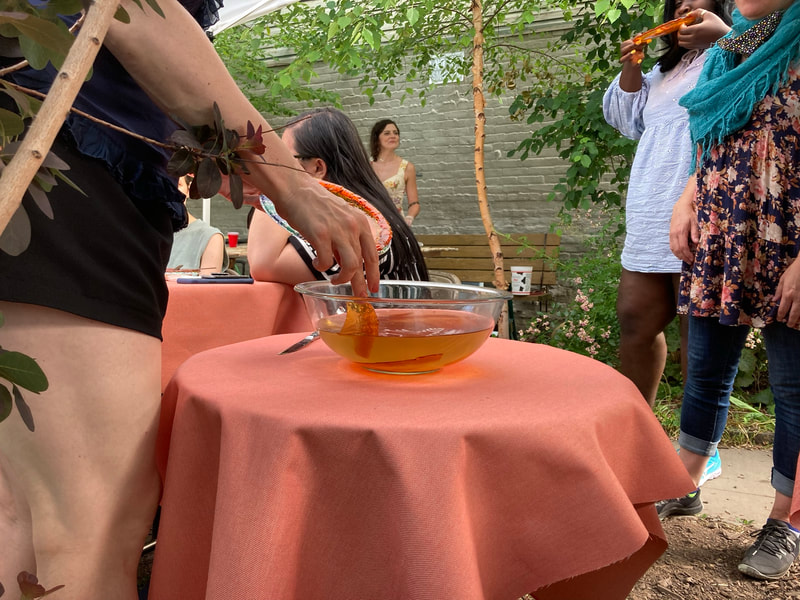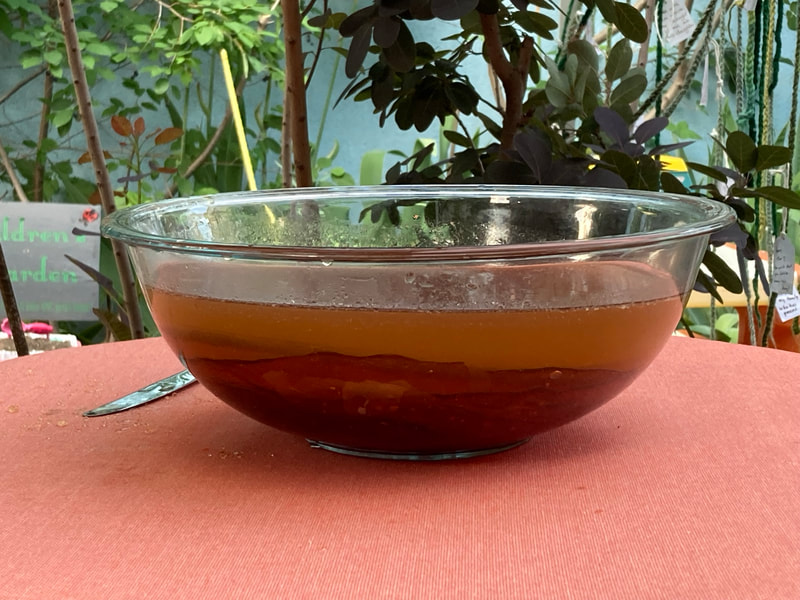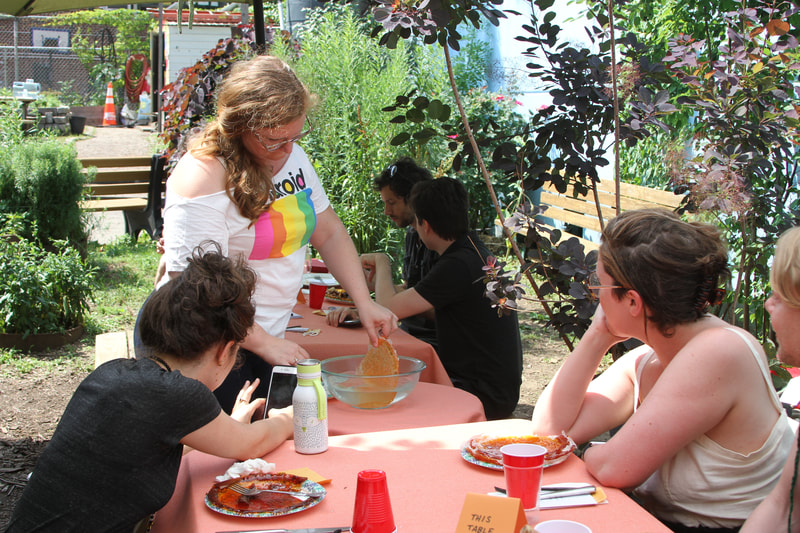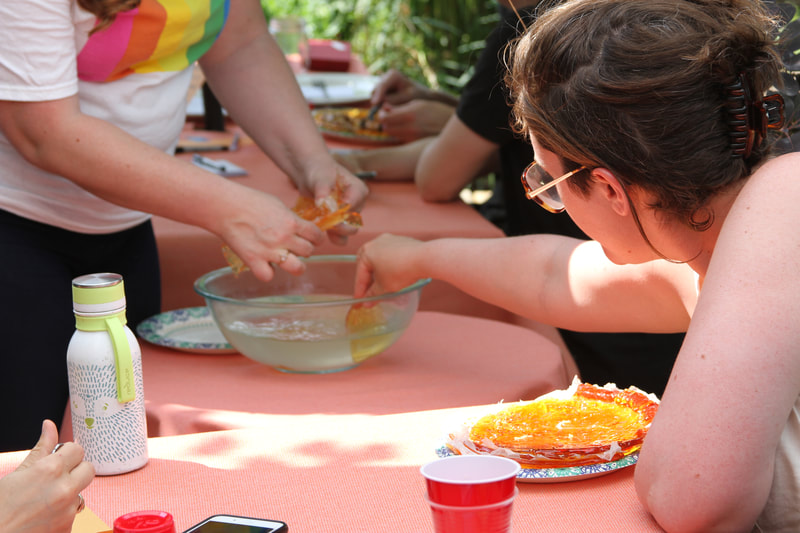NEW YORK
FLUX FACTORY
Din Din's Missing Luncheon
20 June 2021
Karek Krolak, author of Dictionary of Negative Space, facilitated conversations where participants were encouraged to bring memories of what they’ve lost and share stories, moments of silence, and moving metaphors to help digest grief. The guest were invited to write on a tag who or what they've lost last year then hang it on a sculpture made of fabric by Karen Krolak. Bianca Abdi-Boragi served French crepes made of lost bread, her mother recipe not lose any dry bread all served on Hybrid Buffet a table mosaic made of discarded bread fully coated with matt varnish inspired from the front of Ketchaoua mosque in Algiers which was destroyed turned into a church under the French then re turn into a mosque, addressing waitressing, labor but also the hybridization of culture, architectonic narratives, mechanism of assimilation, war on religion but most importantly pacifism, and the act of breaking bread together. All deserts were served in sugar plates made by Heather Kapplow. Each guest then dissolved the plate they ate on in hot water. This gesture is Kapplow's "Breakaway" poetic piece which consisted of a varied series of audience-enacted gestures woven into multiple Din Din events. It is ritual activity that conflates the notion of theatrical breakaway props — things designed to be destroyed without hurting anyone — with the idea of freedom obtained by breaking away from dysfunctional patterns rooted in traumas from the past.
Held June 2021, Din Din was a series of free, socially-distanced outdoor public events which use food and art to build community. Produced by Flux Factory and taking place in the neighboring Windmill Community Garden, works ranged from visual art, dance, film, meals, activism, and music.
Food is a basic survival necessity, but also begs the most abstract questions – Din Din artists use food to address wide-ranging issues. Some artists investigate both loss and preservation of family, tradition and personal identity. Others use food to address ecology and food justice. Many works employ aesthetics of camp and kitsch, but there were no bad tastes allowed in the meals served at every single event!
FLUX FACTORY
Din Din's Missing Luncheon
20 June 2021
Karek Krolak, author of Dictionary of Negative Space, facilitated conversations where participants were encouraged to bring memories of what they’ve lost and share stories, moments of silence, and moving metaphors to help digest grief. The guest were invited to write on a tag who or what they've lost last year then hang it on a sculpture made of fabric by Karen Krolak. Bianca Abdi-Boragi served French crepes made of lost bread, her mother recipe not lose any dry bread all served on Hybrid Buffet a table mosaic made of discarded bread fully coated with matt varnish inspired from the front of Ketchaoua mosque in Algiers which was destroyed turned into a church under the French then re turn into a mosque, addressing waitressing, labor but also the hybridization of culture, architectonic narratives, mechanism of assimilation, war on religion but most importantly pacifism, and the act of breaking bread together. All deserts were served in sugar plates made by Heather Kapplow. Each guest then dissolved the plate they ate on in hot water. This gesture is Kapplow's "Breakaway" poetic piece which consisted of a varied series of audience-enacted gestures woven into multiple Din Din events. It is ritual activity that conflates the notion of theatrical breakaway props — things designed to be destroyed without hurting anyone — with the idea of freedom obtained by breaking away from dysfunctional patterns rooted in traumas from the past.
Held June 2021, Din Din was a series of free, socially-distanced outdoor public events which use food and art to build community. Produced by Flux Factory and taking place in the neighboring Windmill Community Garden, works ranged from visual art, dance, film, meals, activism, and music.
Food is a basic survival necessity, but also begs the most abstract questions – Din Din artists use food to address wide-ranging issues. Some artists investigate both loss and preservation of family, tradition and personal identity. Others use food to address ecology and food justice. Many works employ aesthetics of camp and kitsch, but there were no bad tastes allowed in the meals served at every single event!





